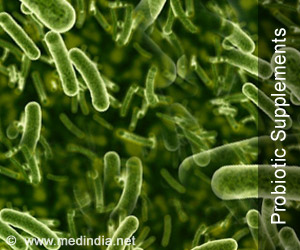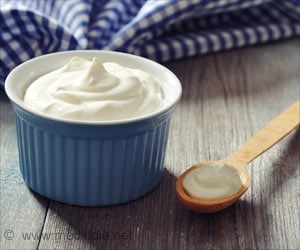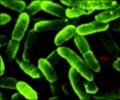Probiotics are friendly bacteria or living microorganisms that can possess oral health benefits by fighting gum disease, plaque and halitosis.

- Probiotics also referred to as “good bacteria” when consumed in sufficient quantities have beneficial effects on human health and are also safe.
- The two most researched and well-known probiotic bacteria are Lactobacillus and Bifidobacteria.
- Probiotics embark a new area of research in oral medicine, and clinical investigations have shown positive results, but still more research has to be done in this field.
For a microorganism to be oral probiotic, it should adhere and colonize teeth surfaces in the oral cavity. Generally, probiotics are strain specific, and the commonly used strains belong to the genera Bifidobacterium and Lactobacillus; these genera are a part of the normal human microbiota and are usually found in the oral cavity and in dental caries.
Lactobacillus rhamnosus generates a growth inhibitory substance against Streptococcus sobrinus, which reduces the possibility of dental caries. Streptococcus salivarius strains are good oral probiotic, as they are early colonizers of mucosal surfaces and are predominantly found on the tongue surface of healthy individuals.
Other oral probiotics strains include L. reuteri, L.johnsonii, L. casei, L. acidophilus, propionibacterium, and W. cibaria. Species mainly found in the saliva samples include L. paracasei, L. plantarum, L. rhamnosus, and L. salivarius.
Some culture based studies indicate that bifidobacteria are one of the first anaerobes in the mouth. Bifidobacterial species separated from the oral samples comprise B. longum, B. dentium and B. bifidum. Both genera lactobacilli and bifidobacteria are safe and present in breast milk; thus exposing the oral cavity to these bacteria early in the life.
- It plays an important role in binding of oral micro-organisms to proteins (biofilm formation).
- Involvement in substrate metabolism
- Inhibiting plaque formation by intervening with bacterial attachments.
- Production of chemicals that hampers formation of oral bacteria
- Controlling mucosal permeability
- Effect on local immune system
- Regulating systemic immune function
- Production of antimicrobial substances in-response to oral pathogens
- Decreasing inflammatory response
In dental caries, both acidogenic and non-acidogenic bacteria increase in number. Probiotic bacteria and genetics can dislodge cariogenic bacteria with non-cariogenic bacteria. Only two probiotic bacterial strains like Streptococcus thermophilus and Lactococcus lactis can prevent dental caries; they can adhere to hydroxyapatite and then enter into biofilm which is similar to dental plaque. These bacteria also possess the capability to bind with microorganisms found in plaque.
Probiotics in Periodontal Disease
Probiotics were first used for improving oral health by reducing periodontal inflammation. People with many periodontal diseases such as periodontitis, gingivitis and pregnancy gingivitis showed positive results after being treated with L. acidophilus strain. The probiotic strains used for this purpose include L. salivarius WB21, L. brevis (CD2), L. reuteri strains and Bacillus subtilis.
It is observed that orally administered probiotics can benefit chronic periodontitis. Mucosal immune responses can be enhanced by probiotic immunization.
Periodontal patients who used chewing gums or lozenges having probiotics noted an improvement in their periodontal disease.
Probiotics and Halitosis
Halitosis (bad breath) is due to the formation of unstable sulphur compounds produced by the anaerobic bacteria which degrade the salivary food proteins. S. salivarius generates a specific by-product called as bacteriocins which reduce the overall quantity of unstable sulphide producing species.
Oral probiotic lactobacilli improved halitosis and also showed positive effects on gum bleeding
Gargling solutions containing probiotics retard the production of volatile sulphur compounds that facilitate bad breath.
Probiotics and Orthodontic Treatment
Oral hygiene can be affected by fixed orthodontic appliances, as they can cause accumulation of microorganisms resulting in growth of Streptococcus mutans and demineralization of enamel. A clinical study conducted in 2009 by Cildir et al. with probiotics using Bifidobacterium animalis subsp, Lactis DN-173010 showed that this study reduced S. mutans in individuals using fixed orthodontic appliances.
Probiotics and Oral Candidiasis
Scientists noted that there is a reduction in the prevalence of Candida albicans in elderly people after consumption of probiotic cheese comprising of L. rhamnosus GG and Propionibacterium freudenreichii ssp.
A new research from Japan’s Teikyo University Institute of Medical Mycology has proposed that an oral probiotic Streptococcus salivarius K12 suppresses the growth and colonization of Candida species.
References:
- Probiotic
https://en.wikipedia.org/wiki/Probiotic#Immune_function_and_infections - Probiotics and Oral Health
http://www.ncbi.nlm.nih.gov/pmc/articles/PMC2897872/ - Probiotics and Oral Health: A Review
http://www.ispcd.org/userfiles/rishabh/V7I10/V7I10A29.pdf - Oral Probiotic Stops Yeast Infections
http://www.realnatural.org/oral-probiotic-stops-yeast-infections/















